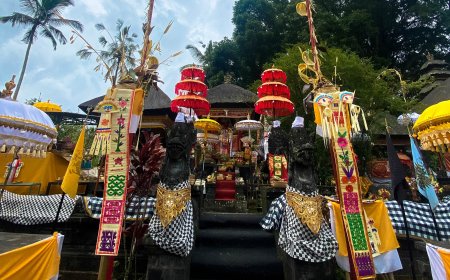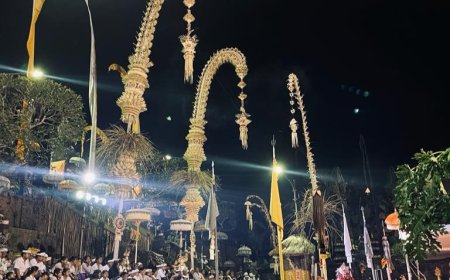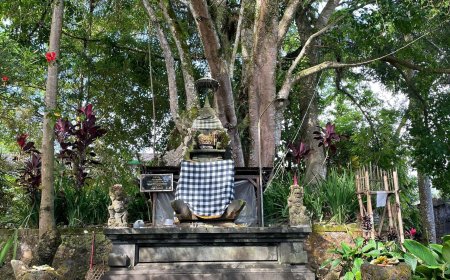Gunung Lebah Temple in the Heart of Ubud Village
The history and uniqueness of Gunung Lebah Temple in Ubud Village is an important part of Bali's rich cultural heritage. This temple is not only a place of worship, but also an attraction for tourists who want to understand more deeply the culture and history of this island.
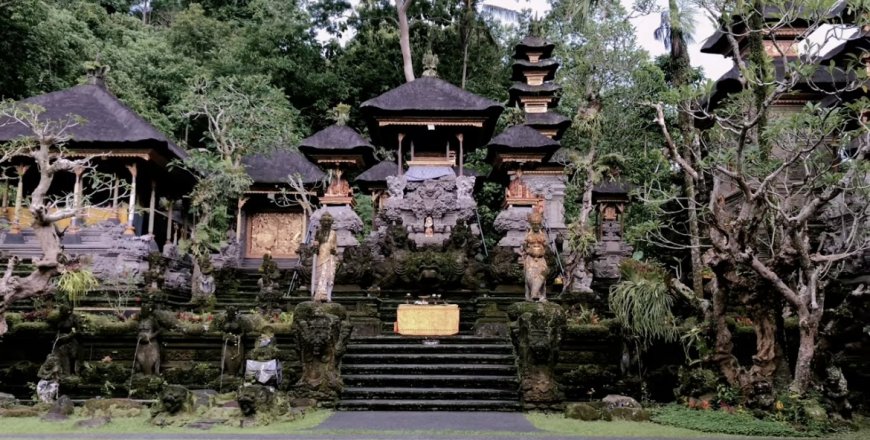
Gunung Lebah Temple (Source: Youtube.com/Pujangga Nagari Nusantara)
Bali, an island rich in Hindu culture and traditions, is home to many stunning temples. Temples in Bali are used by Hindus to worship Ida Sang Hyang Widhi Wasa. There are four well-known types of temples, including Pura Kawitan, which is used as a place of worship by individuals who have the same family or caste ties, Pura Kahyangan Desa, which is used by residents of Pakraman villages or certain traditional villages, Pura Swagina, which is used as a place of worship. worship for those who have similarities in their profession, and Pura Kahyangan Jagat, which is used as a place of public worship that does not differentiate between a person's family origin, village origin, or profession.
Apart from the Kahyangan Tiga Temple which is the main parahyangan of a traditional village. In Pakraman Village, Ubud itself has other traditional temples, such as Gunung Lebah Temple. Gunung Lebah Temple has its own history and uniqueness. This temple is not only a place of worship for Balinese Hindus, but is also a tourist destination that attracts visitors who want to explore the rich history and natural beauty of this island.
Gunung Lebah Temple was originally founded by Rsi Markandeya, a holy priest from India in the 8th century. In the Lontar Markandeya Purana, he is a highly respected Hindu religious figure and is also considered to be the figure who introduced Hinduism to Bali. In his journey, Rsi Markandeya also founded the Besakih Temple and opened the Taro village as a place for migrants from Java to arrive.
When Rsi Markandeya was traveling on the land of Bali, he arrived at the slope or small hill that extends from north to south. To the west and east of the hill flowed two clear rivers, which later this hill was named Mount Lebah, while the two rivers surrounding the hill were called Tukad Yeh Wos Kiwa and Tukad Yeh Wos Tengen. These two rivers meet in the south of Mount Lebah, which is then called Campuhan or Pecampuhan. The term "Uos" or "Wos" for the two rivers became names that matched their meaning for settlements at that time, where many medicinal plants grew in this valley. In accordance with the contents of the ejection of the Markandeya Purana, "Wos or Uos ngaran Usadi, Usadi ngaran Usada, and Usada ngaran Ubad". From the word "Ubad" this was then transcribed into "Ubud", which became the name of the village we know today.
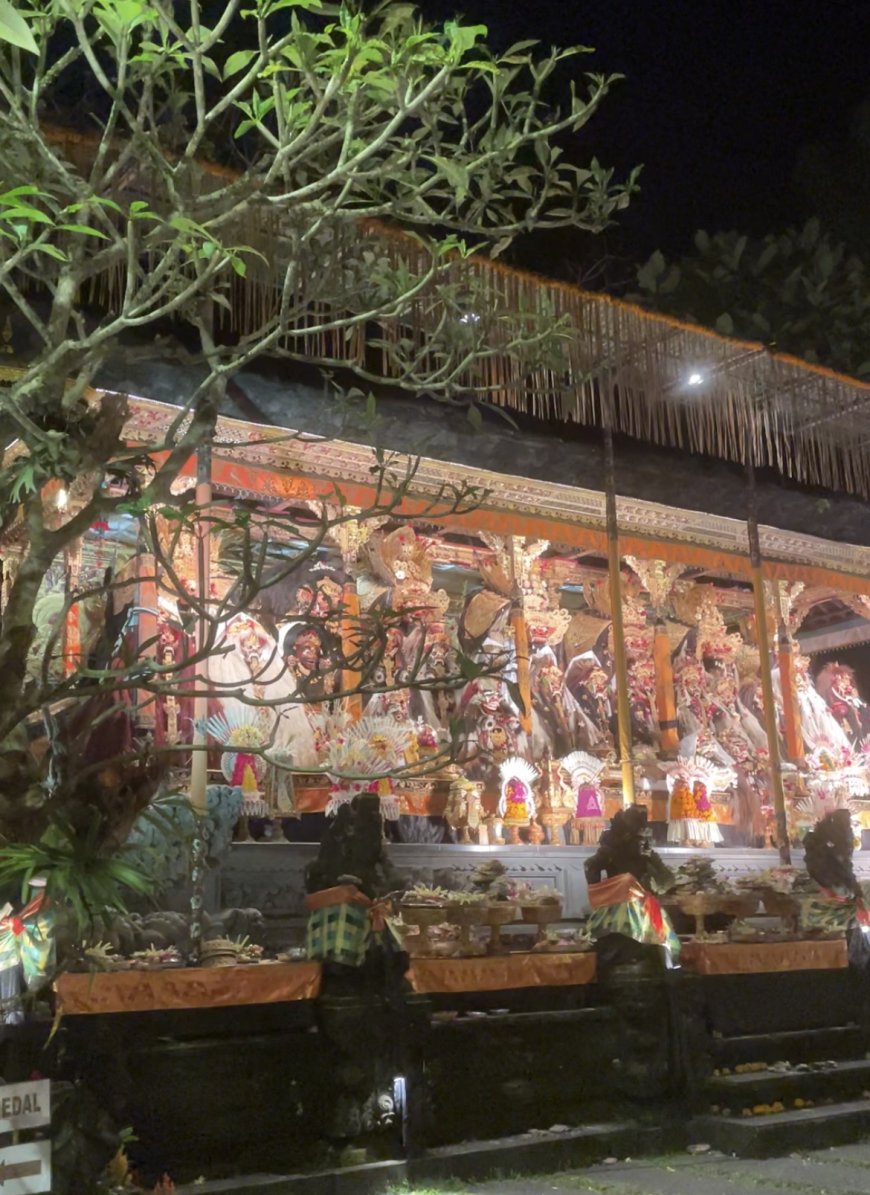
Sesuhunan at Gunung Lebah Temple (Source: Editorial Collection)
His belief in magical powers in the area became the basis for the establishment of the Gunung Lebah Temple. At Gunung Lebah Temple, Dewi Danu on Mount Batur is worshiped as a manifestation of God. According to several inscriptions, Mount Batur itself originates from one of the peaks of Mount Semeru in East Java. The name Gunung Lebah Temple itself comes from the word "Mountain" which means hill and "Lebah" which means valley. That is, this temple is located on a small hill in the Campuhan river valley. To this day, local people firmly believe in the sacredness and magical powers that exist in this place, and often use it as a place of meditation to seek inner peace. Initially, Rsi Markandhya used this location as a place of meditation to achieve spiritual union with Ida Sang Hyang Widhi Wasa, with the hope of gaining self-liberation and inner peace. Due to the presence of magical powers in the Campuhan valley, the Gunung Lebah Temple was founded there.
The structure of the Gunung Lebah Temple consists of three pages. The first page is called Nista Mandala or often called Jaba Sisi. The second mandala is called Madya Mandala or often called Central Jaba. This section separates the nista mandala from the main mandala. The third Mandala is called the Main Mandala or often called Jeroan. This part is the most sacred area.
Gunung Lebah Temple has its own uniqueness that differentiates it from other temples in Bali. One thing that stands out is its location in a river valley, while most temples in Bali are usually located at higher elevations, reflecting mountains as a symbol of purity and fertility. Even though it is located in a river valley, the orientation of this temple is still towards Mount Batur, creating a distinctive spiritual atmosphere.
In addition, there are oral stories from the local community that also tell about two giants, a woman and a man, who live in a cave around Tukad Yeh Wos Kiwa. They often eat humans participating in ceremonies at Gunung Lebah Temple. These two giants eventually died, one of them because he was stabbed by a farmer from Penestanan, and the other because his cave was burned by the local community. The relics of these giants can still be found around the Gunung Lebah Temple area, such as caves, giant mortars, giant markets, and giant graves.
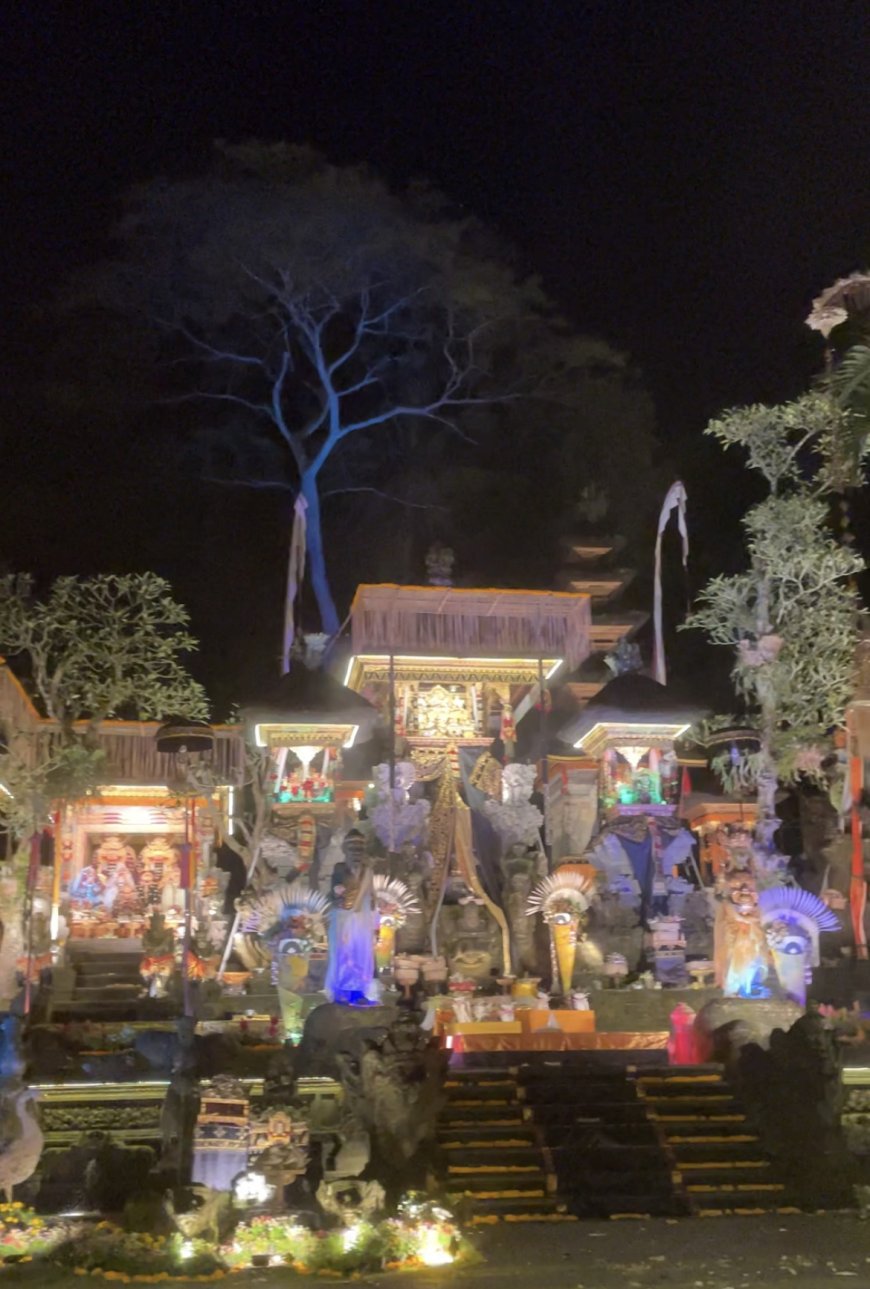
Ceremony at Gunung Lebah Temple (Source: Editorial Collection)
The history and uniqueness of Gunung Lebah Temple in Ubud Village is an important part of Bali's rich cultural heritage. This temple is not only a place of worship, but also an attraction for tourists who want to understand more deeply the culture and history of this island. With a combination of beautiful nature and deep spiritual values, Gunung Lebah Temple is one of the must-visit destinations for anyone on vacation in Bali.



















































